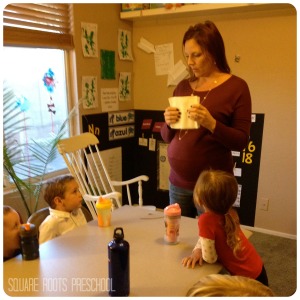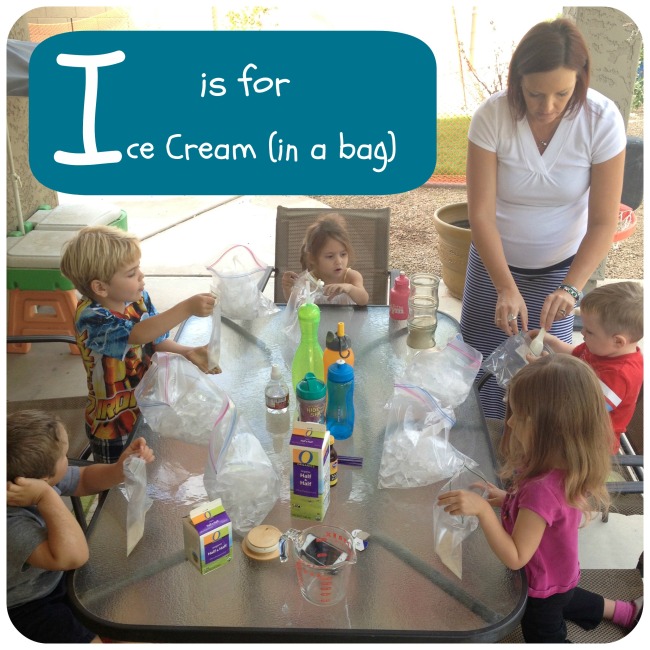This week we spent time studying the letter “N” in all sorts of ways. We created newspaper art and made newspaper Ns, we did a number toss, made dancing noodles, worked on our fine motor skills with nuts and bolts, and played net catch outside, among other enriching activities.
We, of course, learned the sound of the letter N and practiced writing it, but we also used an everyday activity to reinforce the letter concept. At snack time, we use NAPKINS! Napkins aren’t just useful for learning the letter N and wiping our fingers, they can do so much more.

Ms. Taryn talks to the students about shapes while passing out napkins.
Every day at snack time, Ms. Taryn asks the students what shape their napkin makes, and then, as they unfold it, what other shapes it makes. The napkin can be a square, triangle, diamond and rectangle (and if we crumple it into a ball after snack time, it might be a sphere). We reinforce the opposites “small and large” by taking our small square to a large square when we unfold our napkins. The students unfold their own napkins and clean up after themselves after snack time, so this whole napkin business also gives them a sense of responsibility, pride, and accomplishment.
Napkins can be important tools at home, too! Preschool aged children can help with family meals by counting out the correct number of napkins for the people sitting at the table. Napkins are a perfect thing for young children to work with when first setting the table because they won’t have to handle sharp utensils or breakables. You can ask your child to fold each napkin into a triangle or a rectangle or even unfold it completely to make a large placemat. If you use napkin rings, see if your child can roll the napkin into a cylinder shape and insert it into the holder. All of this is great, too, for building fine motor skills. Your child will likely feel pride in being able to contribute to family meal preparations.
Everyday objects and tasks may seem mundane to us, but can be a wealth of skill building for preschool children at school and at home.







 Every day at snack time we talk about the healthy foods we are eating and why they are healthy. Once a month, we are treated to a very special nutrition discussion and snack by one of our parents who is a dietician. Since we are studying the letter “K” this week, we she talked all about Vitamin “K.”
Every day at snack time we talk about the healthy foods we are eating and why they are healthy. Once a month, we are treated to a very special nutrition discussion and snack by one of our parents who is a dietician. Since we are studying the letter “K” this week, we she talked all about Vitamin “K.”
